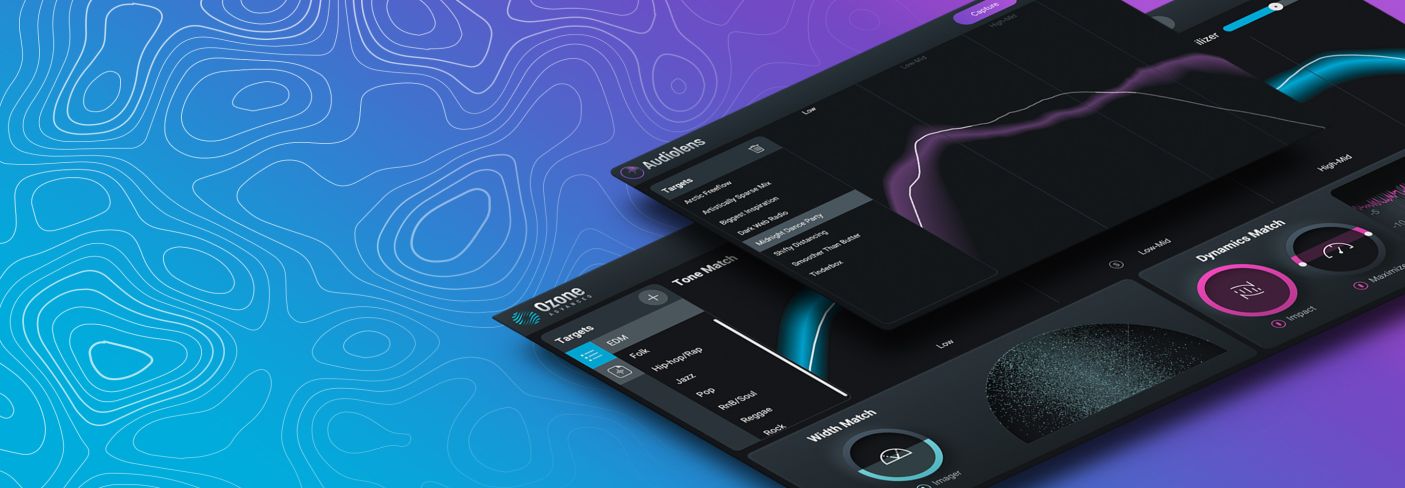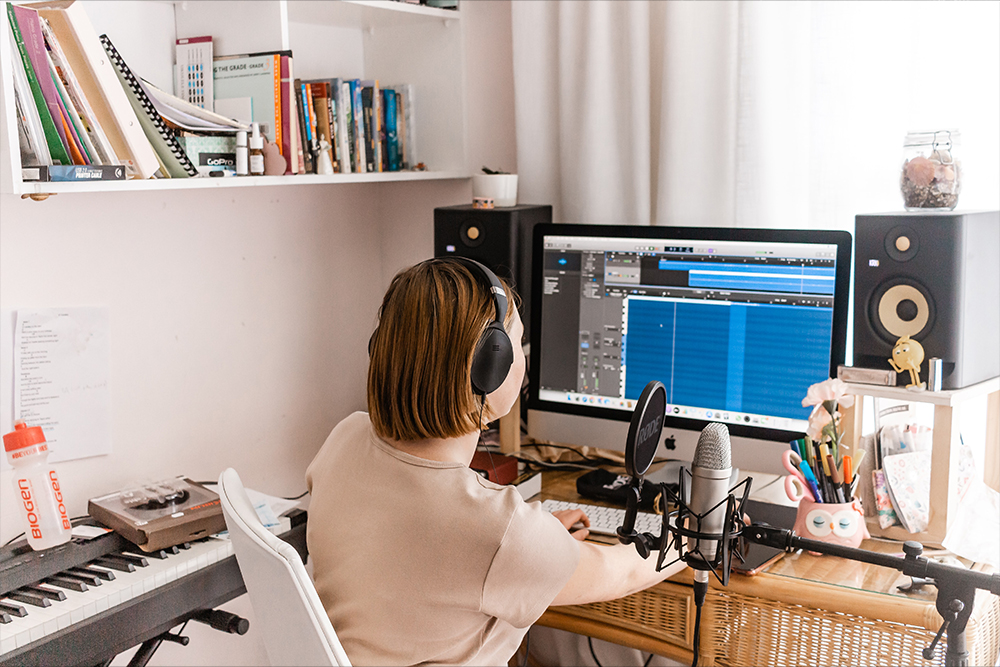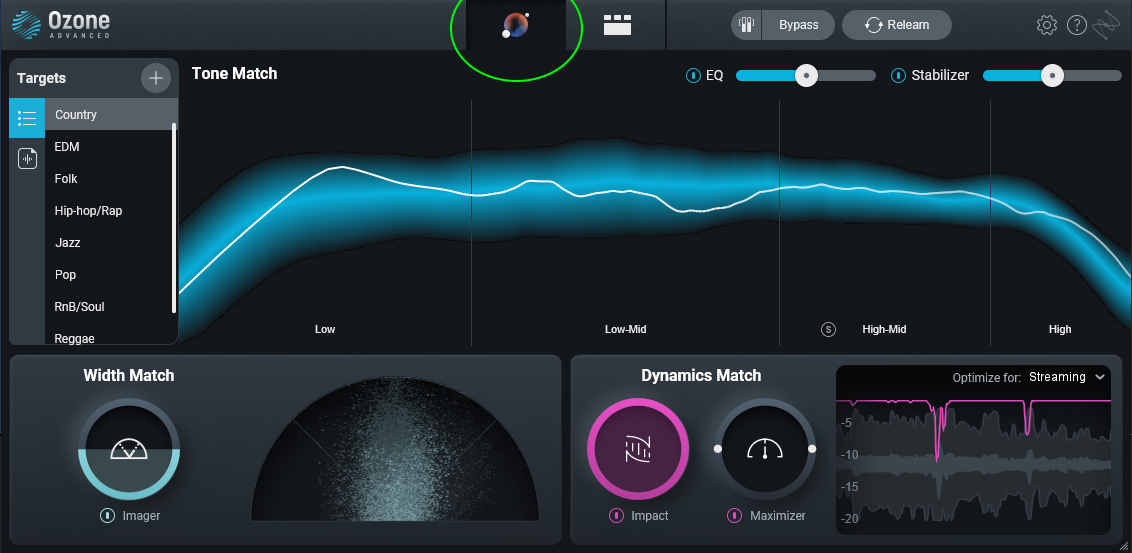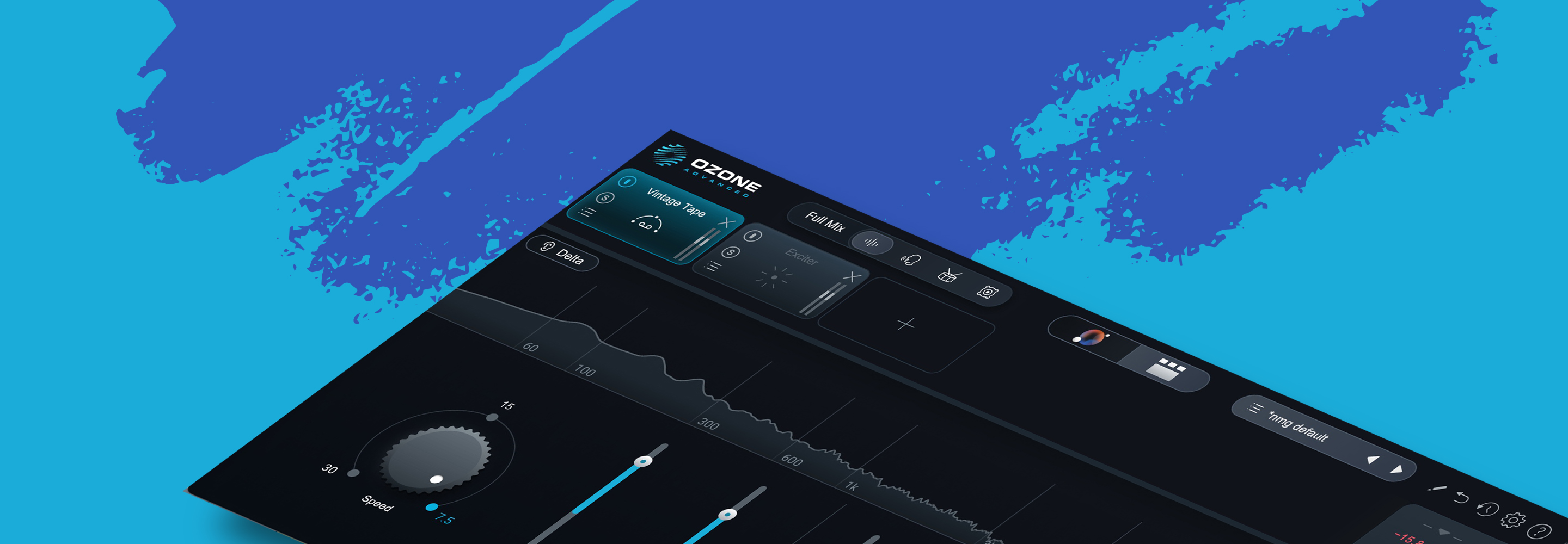
How to Use Reference Tracks in a Mastering Session
Music references can make a mastering session more efficient and more successful. Follow these guidelines to ensure mastering results that are most authentic to the music.
Reference tracks are incredibly helpful mastering tools when it comes to the efficiency of a mastering session, for several reasons we’ll be discussing below. However, relying on reference tracks comes with a few important caveats that, if not given proper attention, could either make or break the flow and authenticity of your mastering.
Let’s dig deeper into its many advantages while paying attention to a couple of track referencing guidelines in order to guarantee mastering results that are most authentic to the music. We’ll also go over several of the unique referencing tools you have access to with Ozone. If you haven’t already, check out our Are You Listening? video on reference tracks in mastering below.
Follow along with a free demo of


Ozone Advanced


Audiolens
What are reference tracks?
As the keyword “reference” suggests, reference tracks are meant to serve as guides for understanding the intended direction of a record—both artistically and sonically. It’s commonly used in both the mixing and mastering stages, especially when an engineer is collaborating with an artist/producer who has specific ideas of how they’d like their production mixed or mastered.
Artists may have a general idea of how certain elements in the production should sound, or they might have a particular song, album, or artist that they want their record to sound similar to. By referencing popular hit records that fall within the same sonic “umbrella” as the music that’s being mastered, the engineer instantly gets a better general sense of the timbre, tonal make-up, and overall dynamic range/energy that the artist is hoping to achieve in their music.
Though reference tracks tend to overlap between both stages, it’s important to distinguish the purpose of reference tracks in the mixing stage versus mastering stage.
In mixing sessions where you have access to each individual track, you have full control over every aspect of the production—from the levels, panning and automation down to the effects and timbre of every instrument in the record. Analysis of reference tracks takes on a microscopic level where every element in the production could be dissected.
In mastering where you’re typically working with a finalized stereo mix, reference tracks are approached with a broader big-picture perspective. So your reference track analysis leans more towards the overall sound of the music (e.g. tonal balance, loudness, crest factor, etc.).
Below are some tools that can help you use referencing tracks in your mastering session:
- The new Audiolens desktop app from iZotope allows you to capture and analyze audio from any streaming platform or audio source, collecting data on sonic characteristics, and matching it within your own mixes and masters.
- In Ozone, there are multiple built-in features that offer a seamless and intuitive A/B listening experience between your music and reference tracks. Its Master Assistant can match your music to a target genre, and it can also match your track to custom targets that you upload or import via Audiolens. Its Track Referencing feature allows you to listen to multiple reference tracks with ease within your mastering workflow.

Ozone has multiple built-in features that offer a seamless and intuitive A/B listening experience between your music and reference tracks
We will go over each unique referencing tool in greater detail later in the article. In the meantime, let’s go over the foundations of why we use reference tracks for mastering, along with tips on how to effectively use references in a mastering session.
Advantages of using reference tracks in mastering
Reference tracks can help you understand the client’s artistic intent
With the help of reference tracks, artists have an easier time explaining a specific sound they’re going for. With you being the mastering engineer, this is crucial for ensuring that your mastering decisions align with the client’s vision. Encouraging the client to be open about sharing their ideas helps bridge this creative gap between collaborators. Rather than relying solely on technical jargon and numbers, oftentimes all it takes to get collaborators on the same page is mentioning a popular hit record as a point of reference.
Reference tracks can provide perspective when envisioning the final mastered sound of your own production/mix
Mastering a song you’ve produced/mixed yourself poses several unique challenges, one of which is the reshifting of your perspective from producer/mixer mode to now mastering mode where adjustments tend to be more nuanced. Reference tracks during the mastering stage can help cleanse your (ear) palate, reset your mindset & workflow, and allow yourself to approach your music through a fresh, big-picture perspective.
Reference tracks serve as a helpful guide for relating your music to what’s out there in the marketplace
Besides helping you get a better idea of the artist’s direction, reference tracks are also helpful for checking how your masters compare to music within the same production style/genre that’s already out in the marketplace—whether it be streaming sites or record stores. Without losing your focus on the integrity of your mastering approach, you also want to make sure that the music you’re mastering would sit nicely on a playlist alongside other tracks that have the same style/characteristics.

Reference tracks serve as a helpful guide for relating your music to what’s out there in the marketplace
Using reference tracks in mastering with Audiolens and Ozone
Capture audio with Audiolens
Once you have a song you would like to use as a mastering reference, you can capture its sonic profile with the Audiolens desktop app. Audiolens analyzes audio from any popular streaming platform or audio source. Play your chosen audio through the selected output of your device and the application will collect data on key sonic characteristics, helping you to visualize, compare, and match your favorite reference tracks and sounds.
The reference analysis from Audiolens is seamlessly integrated with iZotope plug-ins including Ozone, eliminating the need to download tracks or set up tedious audio routing.
Ozone Master Assistant: Target Genres
Ozone comes with a robust AI that harnesses the power of machine learning to leverage the impact of reference tracks to your mastering workflow. Ozone's Master Assistant can analyze your song and generate a custom mastering signal chain that’s tailored to the reference genre that best matches your song or the custom reference that you saved from Audiolens.
Let's first look at the target genres. Initiate Master Assistant, select the Master Assistant tab located on the top section of Ozone (see screenshot below). To start the song analysis, play the loudest/most energetic section of your song. After a few seconds, Master Assistant will begin to generate a mastering signal chain that's tailored to a set of parameters, one of them being a target genre.

Ozone Master Assistant button
Though Master Assistant initially selects this reference genre based on its analysis of your song, you can fine-tune it further by auditioning different genres from the Target Library.
I encourage you to fine-tune the various parameters further to better suit your music. You can do so within the Master Assistant view for a more intuitive AI-based approach, or you can be more detailed and surgical in the classic Modules view.
Master Assistant: Reference Matching
Ozone goes a step further by using AI to generate a master chain that’s tailored to specific reference tracks of your choice. Master Assistant’s Reference Matching functionality lets you build and manage your own set of custom reference targets using your own library of reference tracks. You can do so by selecting the + button on the Target Library panel (see screenshot below).
Your previously saved reference that you captured and analyzed with Audiolens will automatically appear in the Ozone Target Library.

Master Assistant’s Reference Matching functionality lets you build and manage your own set of custom reference targets using your own library of reference tracks, including analyzed audio from Audiolens
Similar to working with target genres, you will need to play the loudest/most energetic section of your song to let Master Assistant effectively analyze and generate a mastering signal chain that best suits your song. From there, you can adjust the settings further by exploring all the various parameters/subtargets in the Master Assistant view (tonal balance, stereo width, microdynamics, and loudness), or go more detailed with the Modules view.
To learn more about Ozone's Track Referencing feature, read this Track Referencing tutorial.
Tips to effectively use reference tracks in a mastering session
Now that we've outlined how to use reference tracks in your session, let's look at some tips that will help you along the way when using them in your mastering session.
Resist relying too much on reference tracks
It’s important for you as the mastering engineer to take the time and listen to the music you’re mastering without being influenced by any reference track. You don’t want to lose sight of the unique, defining qualities of your music when dialing in your mastering settings.
A reference track might not even sound closely similar to the music you’re working on, so discernment is key! Your responsibility then is to analyze the notable qualities in the reference track and adjust your mastering approach with those in mind. Find out what the client specifically likes about the reference track—is it the punchy low end, the saturation and loudness, the presence in the vocals? Track referencing can go a long way when communicating with the artist.
If necessary, guide your artist/client towards finding effective reference tracks
There may come a time when your mastering session involves a reference track that has zero similarities with the music you’re working on. Or perhaps the artist/client is not fully certain about what the final master should sound like.
Part of the communication process is to further guide them towards giving you more insights that are helpful to the mastering session. Try to steer them to references that are within the same production style/genre as their music.
Here are a few questions I like to ask that have helped me pick my clients’ brains in the past:
- Who are your musical influences?
- What other artists/songs do you envision being in the same streaming playlist as your music?
- If they’ve provided references, ask them what they specifically like about the reference track/s and why they’ve chosen it as a reference for this particular mastering session.
Start taking advantage of reference tracks—but don’t lose sight of artistic intent
Reference tracks are helpful tools in the mastering world, and Ozone has multiple built-in functionalities that leverage the impact of reference tracks in mastering. But do keep in mind that references are only as effective as the quality of communication between you—the mastering engineer—and the client you’re collaborating with.
And if you’re mastering your own production or mix, references are only effective if it doesn’t hinder you from your own creative freedom. Regardless of the reference tracks, your ears and mastering experience are what will ultimately dictate the final mastered sound. Listen with intent and hone in on mastering the music without losing sight of its unique characteristics.
With these at the forefront, reference tracks naturally become even more powerful tools that enhance the efficiency and flow of your mastering session. If you haven't already, try using the powerful referencing capabilities in


Audiolens


Ozone Advanced


